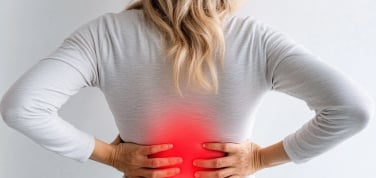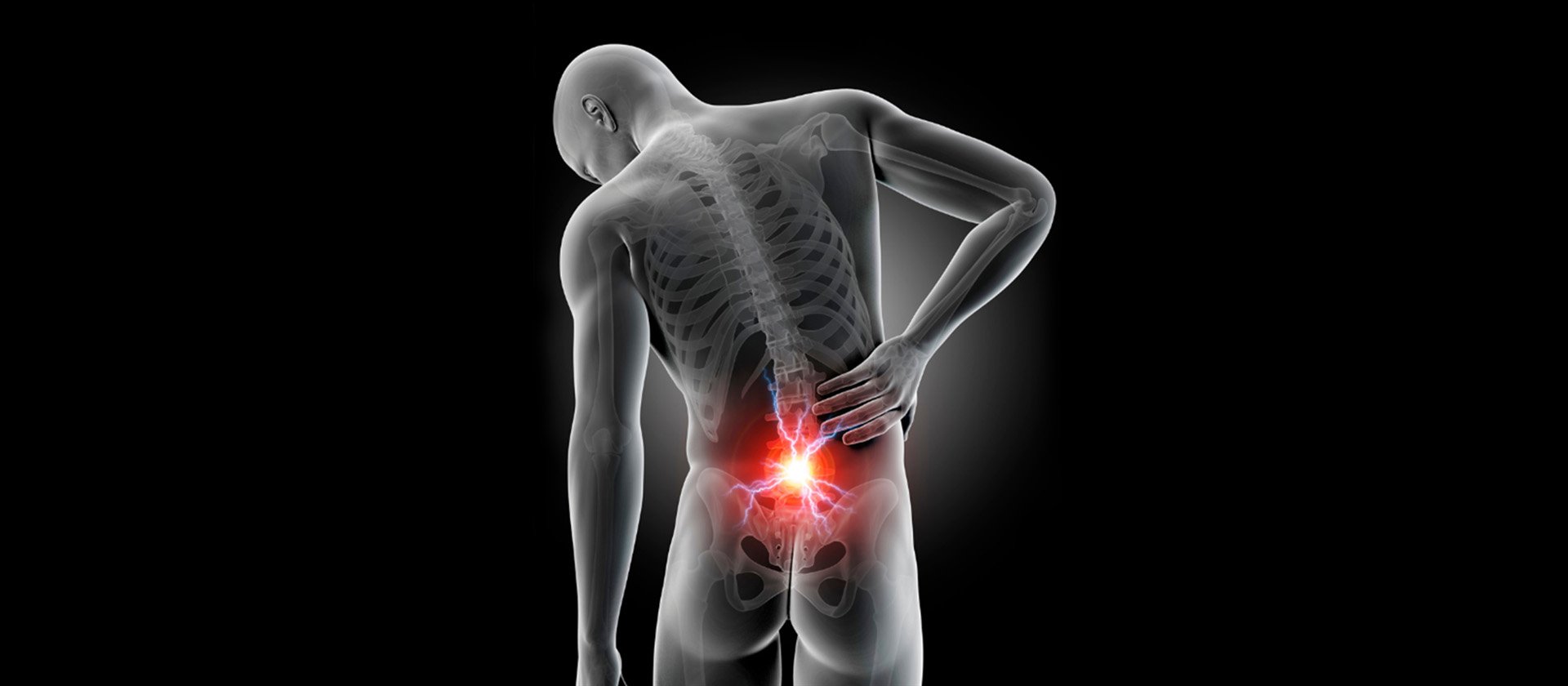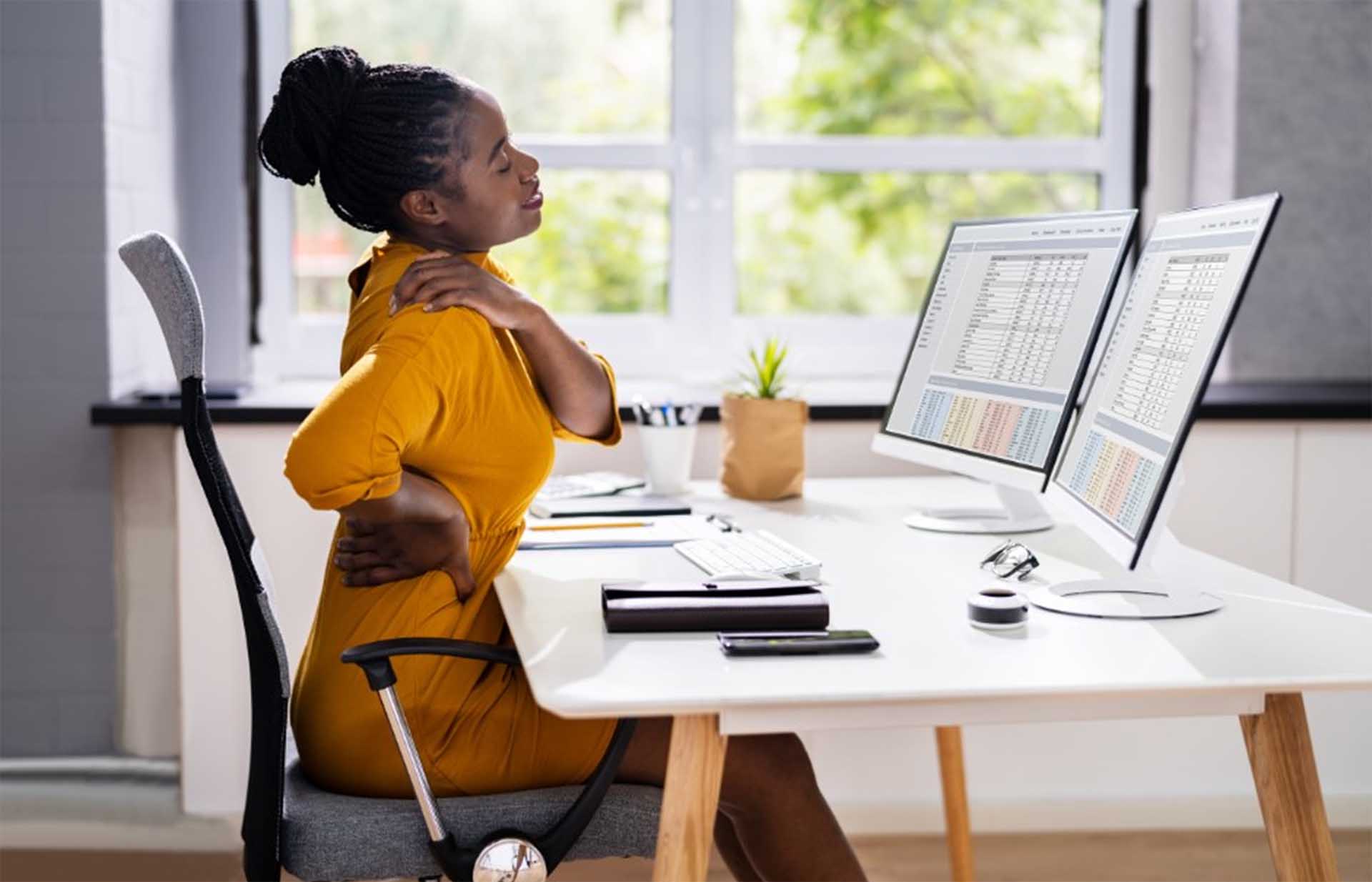Non-surgical spinal decompression is a type of treatment that is used to relieve pain and discomfort in the spine, particularly in the thoracic (mid-back) region. It's a safe and effective alternative to surgery and can be used to treat a variety of conditions such as herniated discs, degenerative disc disease, and sciatica.
Spinal decompression works by gently stretching and relaxing the spine, which can help to take pressure off of the spinal discs and nerves. This can alleviate pain, improve mobility, and promote healing in the affected area.
There are a few different methods of non-surgical spinal decompression, including:
- Traction: This is a common method of spinal decompression that involves the use of a traction table or machine. The patient is secured to the table and gentle traction is applied to the spine, which helps to stretch the spine and relieve pressure on the discs and nerves.
- Inversion therapy: This method involves the use of an inversion table, which allows the patient to hang upside down in a controlled manner. Gravity-assisted stretching can help to take pressure off of the discs and relieve pain.
- Chiropractic adjustments: Chiropractic adjustments can also be used as a form of spinal decompression. The chiropractor will use their hands to manipulate the spine, which can help to realign the vertebrae and take pressure off the discs and nerves.
- Biomechanical changes: Being aware of posture and how we sit, stand, and move can impact the load distribution on the spine. This in turn influences the amount of pressure placed on the spinal nerves, reducing pain.
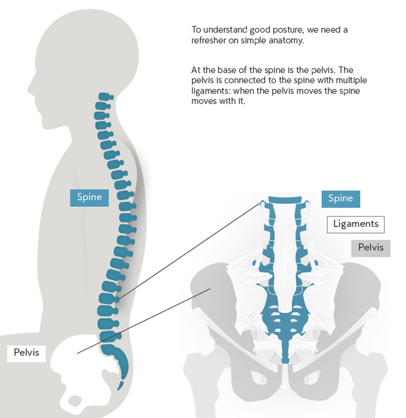
How important is posture?
Out of these non-surgical options, biomechanical changes, or changes in posture, are things we can work on every day. And posture is the one thing that can undo the gains from the other three therapies!
We know that the body adapts to the positions we are in the majority of the time. Since many of us are forced to sit all day, every day, sitting posture is key to impacting the overall biomechanical changes.
Poor sitting posture can result in upper thoracic pain due to increased disc pressures leading to disc herniation, degenerative disc disease, or even spondylolisthesis. And since we know that the body adapts to poor sitting posture, we can infer that it will affect standing posture which keeps the cycle going.
How can I improve my sitting posture?
The key to sitting well and in good posture is the angle of the pelvis. Let’s do a quick review of anatomy. The base of the spine, L5 and the sacrum are connected to the pelvis by multiple ligaments. This means that when the pelvis rotates in any direction, the spine has to move with it.
In sitting, we can try to sit up straight and bring our pelvis upright to neutral, engaging all of our core muscles. But over time if the pelvis isn’t supported, we get tired and the pelvis rolls back and the spine follows into a “C” curve.
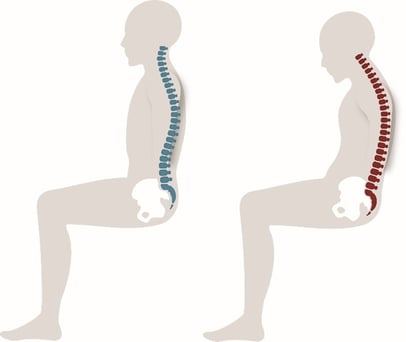
If you can relate, don’t feel bad! Most chairs aren’t designed to support the pelvis so we all end up slouching.
This is where Anthros comes in. Anthros was designed to support the body in all the right places to promote an upright spine, with healthy disc space to prevent pain and chronic conditions. Anthros can support the biomechanical changes that we all want!
How is Anthros different?
Anthros has a patent pending independently adjustable two-part back system that is designed to support and hold the pelvis, and balance the upper back.
Once the back system is adjusted, the Anthros chair can be brought into a resting tilt position that further removes the effects of gravity while maintaining optimal alignment.
Overall, with non-surgical decompression, working to improve posture will go a long way!
If you are looking to improve posture while sitting, look no further than Anthros.
Anthros is the only chair in the world that is guaranteed to improve posture or your money back. The science-backed, patented design is registered with the FDA as a posture-improving chair and is proven to have the lowest pressure (most comfortable) cushion on the planet (verified by university testing).
Take the next step to reducing pain, increasing comfort, and maximizing performance!
Recent Post
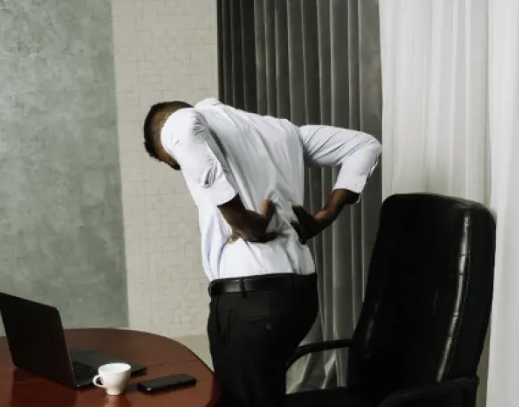
Exercises to Avoid With a Herniated Disc
March 6, 2025A herniated disc can put a serious damper on...

Gentle Back Exercises for Lower Back Pain & Herniated Discs
February 17, 2025Adding a cushion to your office or gaming chair...
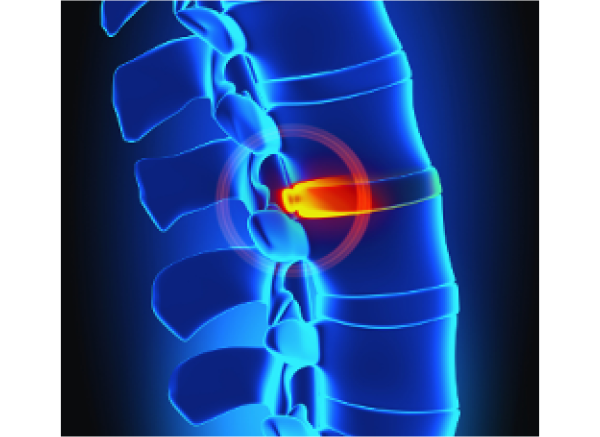
Bulging Disc vs. Herniated Disc:
February 5, 2025Adding a cushion to your office or gaming chair...





